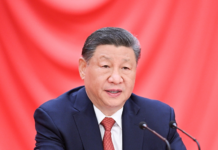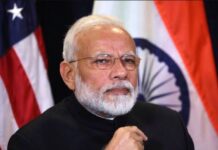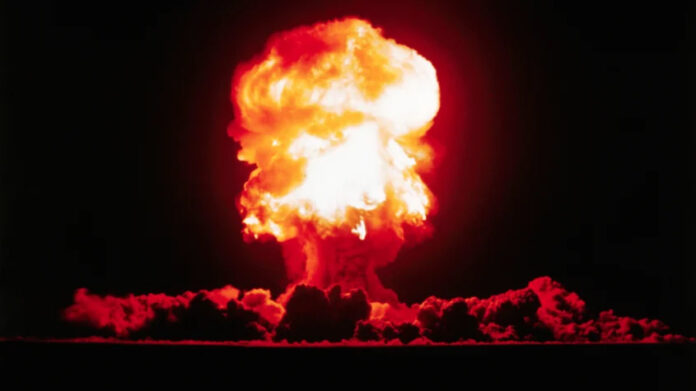On July 31, Russian President Vladimir Putin signed a 55-page Russian naval doctrine. The new document ‘casts the USA as Russia’s main rival’. It spells out Russia’s global maritime ambitions for crucial areas such as the Arctic and the Black Sea. It further catalogues the strategic aims of the Russian Navy. On the occasion, Putin also announced delivery of Zircon hypersonic cruise missile to the frigate Admiral Gorshkov in coming months. Russia’s vast coastline stretching over 37,650 km (23,400 miles) runs from the Sea of Japan to the White Sea. It includes the coastal areas of the North Sea, Baltic Sea, the Black Sea and the Caspian Sea.
Reliable estimates put Russian casualties in the near six-month-old war in Ukraine to around 80,000 troops killed or wounded. On the Ukraine side, the figure varies widely, between 100 and 1000 per day. The two warring states are feeling the sharp pain of resource exhaustion and manpower shortages in sustaining the conflict. Russia’s initial objective of capturing Kyiv and unseating pro-West President Zelensky lies in ruin.
The war has morphed into one of attrition. It is believed to have shrunk to two theatres, the Donbas region in the east, most of which is in Russian hands, and in the south, where a Ukrainian counterattack, not counteroffensive, can be expected.
The nuclear maturity augurs well for South Asia and the larger world. There are however several disturbing undercurrents unfolding alongside. AUKUS, the trilateral nuclear agreement between Australia, UK and the US, Quad, a maritime military grouping between US Japan India and Australia for Indo-Pacific, are prime examples. This is not to mention the geospatial intelligence sharing agreement BECA between the USA and India or acquisition of the S-400 BMD system by India that continues to undercut stability
Ukraine’s military does not have enough military capacity to launch a counteroffensive. It can however mount small counterattacks with the aim to dent Russian morale. Kyiv’s recent drone strike on Crimea, under Russian control since 2014, demonstrates the same, an attempt to regain initiative. Yet with shipments only trickling from its principal strategic Black Sea port of Odessa, now under Russian blockade, Ukraine’s economy is teetering.
Just how this war might end, is anyone’s guess. But one thing is certain-at some stage the US funding and supply of Western weaponry will reach a tipping point. Europe is already facing an economic downturn. A strategic fatigue in the USA will soon set in as was the case with war in Afghanistan. In the event, Zelensky may find himself alone. With external economic and military assistance drying up for Ukraine and military morale sapping on the Russian side, the two might have to reach a negotiated settlement. Yet uncertainties linger. There has been nuclear sabre rattling by the Russian side. And one cannot rule out deliberate use of chemical weapons or even a nuclear catastrophe. The Russian controlled Zaporizhzhia nuclear power plant in Ukraine houses six nuclear reactors containing U-235. The plant located some 550 km southeast of Kyiv stores spent nuclear fuel in containers. Understandably, the spent fuel is the most deadly type of nuclear waste.
On August 9 last, Carnegie Endowment, a renowned US think tank held a webinar discussion on a report entitled, “Striking Asymmetries-Nuclear Transitions in Southern Asia”. The 300-page report authored by Ashley J. Tellis, a fellow at Carnegie, examines the ‘transitions taking place over the past two decades in the nuclear weapons programme of three countries, China, India and Pakistan. The discussants, top experts from all three countries, presented their perspectives on the document.
The report is based on over two decades of intense research including extensive interviews with important source persons in each country. It looks at the nuclear doctrines, weapon stockpiles, delivery systems, strategic defence arrangements, command and control and much more. As explained by the author, all three countries face what he calls “multiplicity of security challenges”. The combined arsenals of three (China 350 warheads, India 160 and Pakistan 165) ‘though modest by American and Russian standards now exceed British and French stockpiles in Europe (around 500 in total)’, according to The Economist. The report does not examine the “transformation” purely from dyadic perspective (India-China or India-Pakistan) (sic) but rather in a “larger strategic context of challenges facing the global nuclear order”.
The transitions in the three, according to the Carnegie report, have taken place along three dimensions. These being, changing character of the arsenal (growing and becoming diversified), changes in strategy (shift from countervalue to limited nuclear use) and speed of retaliation or response (from delayed to development of a rapid response). The report ultimately aims at determining the impact of evolving nuclear transitions on crisis stability in Southern Asia amidst some issues of concern and future “uncertainties”.
What is redeeming however, according to the report, is the fact that despite increasing risk of miscalculation or accident, all three states still view nuclear weapons as “political instruments” rather than “usable tools of war fighting” (deterrence as opposed to war fighting weapons). The centralised control in each country is “persistent and tight”. And this is what distinguishes their nuclear strategies as opposed to the current strategy of the USA and Russia (counterforce strikes, designed to take out opposing side’s nuclear weapons and limit the damage they might inflict). In overall assessment, “things are more stable than the swelling arsenals suggest”. In its recent issue, The Economist notes, “in one sense, nuclear weapons are stabilising. They preclude among their possessors big wars that have roiled up South Asia through its history”.
Some interesting points that surfaced in the webinar conversation included; 1) Pakistan’s nuclear strategy is security driven and has transitioned from credible minimum deterrence to full spectrum deterrence; the first use as a ‘last resort’ 2). Even if the whole world was to move towards disarmament, Pakistan will perhaps still retain its nuclear arsenal as insurance against conventional asymmetry, 3). Despite huge asymmetry, troubled bilateral relations and mutual grievances, Pakistan has never contemplated expanding its nuclear arsenal to develop an ICBM that could target the USA. (This assertion in the report is said to have been out of Pakistan’s fear and threat perception of the USA seizing its nuclear arsenal during the period of the War on Terror). 4) Pakistan will never target Israel because of the obvious proximity of the holy city of Mecca. 5). According to the author, in all case studies of nuclear threats since 1945, there is “not a single instance where China has issued a nuclear threat” (sic) to any country. 6). Of the three countries in focus, none could possibly welcome Russian nuclear sabre-rattling, no matter how justified it may be from Moscow’s perspective.
The nuclear maturity augurs well for South Asia and the larger world. There are however several disturbing undercurrents unfolding alongside. AUKUS, the trilateral nuclear agreement between Australia, UK and the US, Quad, a maritime military grouping between US Japan India and Australia for Indo-Pacific, are prime examples. This is not to mention the geospatial intelligence sharing agreement BECA between the USA and India or acquisition of the S-400 BMD system by India that continues to undercut stability.























